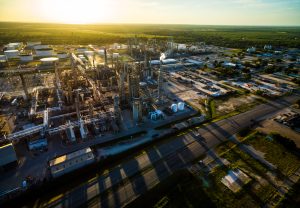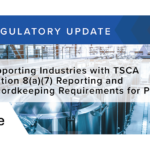
Pasadena Phase 2 Environmental Site Assessments play a crucial role in ensuring the safety and sustainability of property development in the city. Understanding the key components of these assessments and their importance is essential for property buyers, sellers, and developers. Furthermore, being aware of the regulatory framework and the challenges involved in conducting Phase 2 assessments can help stakeholders navigate the process more effectively. This article provides an overview of Pasadena Phase 2 Environmental Site Assessments, discussing their key components, importance, the assessment process, regulatory framework, challenges, and their impact on property development.
Understanding Phase 2 Environmental Site Assessments
Key Components of Phase 2 Assessments
Phase 2 Environmental Site Assessments involve in-depth investigations to determine the presence and extent of contamination on a property. These assessments typically include activities such as soil and groundwater sampling, laboratory analysis, and report preparation. By conducting these investigations, environmental professionals can assess potential risks associated with the site and make informed decisions regarding property development.
Soil sampling is a critical component of Phase 2 Assessments, as it helps identify the types and levels of contaminants present in the soil. This information is crucial for determining the appropriate remediation measures needed to address the contamination effectively. Groundwater sampling is also essential, as it helps assess the potential migration of contaminants through the soil and into the groundwater, which can have far-reaching environmental implications.
The Importance of Phase 2 Assessments
Phase 2 Environmental Site Assessments are essential for various reasons. Firstly, they help identify potential environmental hazards and risks associated with a property, which is crucial information for property buyers and sellers. Additionally, these assessments contribute to sustainable urban development by ensuring that new developments do not harm the environment or pose health risks to future occupants. By identifying and addressing any contaminated areas, Phase 2 assessments protect the health and safety of the community as well.
Furthermore, Phase 2 Assessments play a key role in regulatory compliance. Many local and federal regulations require property owners to conduct these assessments to assess and mitigate any potential environmental risks. Failure to comply with these regulations can result in legal consequences and financial liabilities. Therefore, conducting Phase 2 Environmental Site Assessments is not only crucial for environmental protection but also for ensuring compliance with the law.
The Process of Phase 2 Environmental Site Assessments in Pasadena
Initial Site Inspection and Sampling
The first step in the Phase 2 assessment process is conducting an initial site inspection. Environmental professionals visit the site to visually assess the property and identify potential areas of concern. This inspection involves a thorough examination of the site’s history, previous land use, and surrounding properties to understand any potential sources of contamination. Following the site inspection, soil and groundwater sampling is carried out to collect samples for laboratory analysis. Environmental experts carefully choose sampling locations based on the site’s characteristics and historical data to ensure a comprehensive assessment.
During the sampling process, various techniques are employed to collect representative samples that capture the true environmental conditions of the site. Soil samples are typically collected using a drill rig or hand auger, while groundwater samples may be obtained through monitoring wells or direct push methods. Each sample is handled with precision and care to prevent cross-contamination and ensure the integrity of the data collected.
Laboratory Analysis and Report Preparation
Once the samples are collected, they are sent to an accredited laboratory for analysis. The laboratory utilizes state-of-the-art equipment and analytical methods to detect and quantify a wide range of contaminants present in the samples. Through a combination of sophisticated techniques such as gas chromatography and mass spectrometry, the laboratory can identify even trace amounts of pollutants that may pose risks to human health or the environment.
After the analysis is completed, the results are compiled into a comprehensive report by experienced environmental consultants. This report includes detailed findings, interpretations of the data, and recommendations for further actions if necessary. The findings are presented in a clear and concise manner, outlining the potential risks associated with the contaminants detected and proposing appropriate mitigation measures to address these risks. The report serves as a crucial document for property owners, developers, and regulatory agencies to make informed decisions regarding the site’s environmental condition and potential remediation efforts.
Regulatory Framework for Environmental Site Assessments
Federal and State Regulations
Environmental Site Assessments in Pasadena are conducted in accordance with federal and state regulations. The Environmental Protection Agency (EPA) sets guidelines and standards for assessing and mitigating environmental contamination. Additionally, state-specific regulations, such as the California Environmental Quality Act (CEQA), further govern the assessment and remediation process. Adhering to these regulations ensures consistency and accountability in environmental site assessments.
Pasadena Local Environmental Regulations
Besides federal and state regulations, Pasadena has its own set of local environmental regulations that property developers and environmental professionals must comply with. These regulations may include specific requirements for assessing and remediating contamination, as well as guidelines for sustainable development. Understanding and adhering to these local regulations is crucial to ensure compliance and avoid any legal or regulatory issues during the property development process.
Challenges and Solutions in Phase 2 Environmental Site Assessments
Common Challenges in Conducting Assessments
Conducting Phase 2 Environmental Site Assessments can present several challenges. One such challenge is the identification of potential contaminant sources, especially in cases where historical site information is limited or unavailable. Another challenge is the uncertainty associated with assessing the long-term effects of contamination on human health and the environment. Additionally, coordinating with various stakeholders, such as property owners, regulators, and laboratory facilities, can also pose logistical challenges.
Effective Solutions and Best Practices
To address these challenges, it is crucial to adopt effective solutions and best practices in Phase 2 Environmental Site Assessments. One solution is conducting thorough research and gathering as much historical site information as possible to better understand the site’s potential sources of contamination. Implementing state-of-the-art assessment techniques and tools can also enhance the accuracy of assessments and provide more reliable results. Effective communication and collaboration among all stakeholders involved can further streamline the assessment process and ensure its success.
Impact of Phase 2 Environmental Site Assessments on Property Development
Implications for Property Buyers and Sellers
Phase 2 Environmental Site Assessments have significant implications for property buyers and sellers. For buyers, these assessments provide valuable information about potential environmental risks associated with a property, allowing them to make informed decisions and negotiate necessary remediation measures with sellers. For sellers, a comprehensive Phase 2 assessment report can instill confidence in potential buyers and mitigate any concerns related to environmental contamination, potentially influencing the property’s market value positively.
Role in Sustainable Urban Development
Phase 2 Environmental Site Assessments play a vital role in promoting sustainable urban development. By identifying and remediating contaminated areas, these assessments contribute to the preservation and improvement of environmental quality in Pasadena. They help ensure that new development projects adhere to environmental regulations and take necessary steps to mitigate any potential negative impacts. This, in turn, fosters a more sustainable and environmentally conscious approach to property development, benefiting both the community and the natural ecosystem.
Overall, Pasadena Phase 2 Environmental Site Assessments are crucial in safeguarding property development and promoting sustainable urban growth. Understanding the key components, importance, and the assessment process enables stakeholders to navigate the regulatory framework effectively and overcome challenges. These assessments have a significant impact on property buyers, sellers, and the community as a whole, ensuring environmental safety and contributing to a sustainable future for Pasadena.
As you consider the critical role of Phase 2 Environmental Site Assessments in Pasadena for sustainable property development and regulatory compliance, partnering with a knowledgeable and experienced environmental consulting firm is essential. ESE Partners, with our commitment to responsibly moving business forward through environmental problem solving, stands ready to support your needs. Our team of experts is equipped to handle the complexities of environmental challenges, offering tailored solutions that balance opportunity with community well-being. Whether you require assessment, remediation, or compliance services, we deliver honest, quality-driven results. To take the next step in ensuring your property’s environmental integrity and sustainability, Request A Proposal from ESE Partners today.








